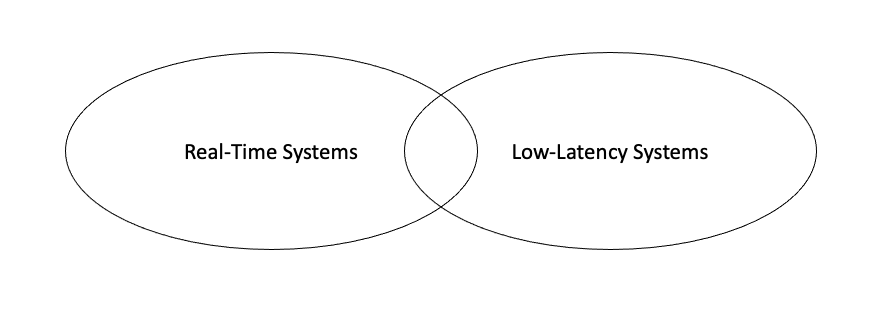Real-Time Is More than Speed
Whenever I talk about today’s business trends with industry analysts who cover data platform technologies, they often mention the misconception in the market about the relationship between real-time responsiveness and software speed. They want to be clear to all business professionals, especially the IT folks, that just because your infrastructure components are fast doesn’t mean you can deliver real-time responsiveness. Speed is a necessary component of real-time systems, but it alone is insufficient. That’s because “real-time” is not the same as speed. There’s undoubtedly a strong correlation between the two concepts, but real-time is about more than just speed.
While real-time systems often rely on low-latency responsiveness, simply having a low-latency system is not enough to deliver a real-time system. A perfect example is the set of database technologies that let you run extremely fast end-user queries. You might get a low-latency result set for your queries, but that ignores the fact that your data has been sitting idly in your database, waiting for an end user to query it. By contrast, there is enormous value in acting on data as soon as it is created, and fast database queries do not address that newborn data. As a result, you’re missing out on real-time business opportunities.

Even though it’s incorrect to do so, we understandably equate the two concepts of real-time and speed because of the real-world examples we commonly associate with real-time. Airbags, self-driving cars, and responsive web pages, to name a few examples, all have a critical need for speed, and all have built-in service-level agreements (SLAs) set by the designers of these systems to suit the expectation of the given scenario. You don’t want an airbag to take 2 seconds to inflate, so the SLA is much shorter than that. And for web pages, you don’t need microsecond responsiveness since humans can’t operate at those speeds (not to mention that we don’t even have the technology infrastructure to run at that level), so the SLA can be a little more relaxed. In both cases, there are expectations on what is necessary for speed, so we conclude that speed is the key.
However, it is easy to view speed (aka, “performance”) too narrowly. To extend the previous example, we know that an airbag must inflate in less than 30 milliseconds, and if it does so, it has succeeded. But remember that other processes must happen before the inflation of the bag. The airbag system must accurately detect a crash and then send a signal to inflate the bag. If this detection and the alerting system take too long, it doesn’t matter how fast the bag increases. Imagine having a detection system that takes 5 seconds to identify a crash, but the airbag inflates in 30 milliseconds. That doesn’t sound like real-time to anyone.
Actual real-time IT infrastructure today should be able to deliver “right now,” no matter where your data is in its lifecycle. What is the freshness of your information–was it just now created? Is it in flight from point A to B? Or is it already stored in a database? Each of these lifecycle stages is critical if real-time is the objective.
For example, if your real-time data represents a customer interaction, can your system act on it “right now”? Or is your system only designed for action after the data gets stored somewhere? Your IT infrastructure can add significant business value if it acts on data when a necessary step is taking place, like while a customer is banking, during a fraudulent event, while someone is shopping online, or when a patient needs attention, to offer a few examples.
These types of value moments are difficult to capture without the right technologies. Hazelcast solves businesses’ challenges when deploying real-time responsiveness by providing a robust data platform that allows you to act on data immediately. The Hazelcast Platform provides a high-performance stream processing engine integrated with a low-latency data storage engine to enable automated responses on real-time data so that “real-time” becomes more than just a fast query at the tail end of your data lifecycle.
Please contact us to learn more about how Hazelcast can help you in your real-time initiatives, and we’ll be happy to share more information. For you technical folks, learn more about Hazelcast by signing up for Hazelcast Viridian Serverless, the easy-to-get-started, cloud-managed service powered by the Hazelcast Platform. You can get started for free in the cloud to see how real-time technology can help with your IT projects.



